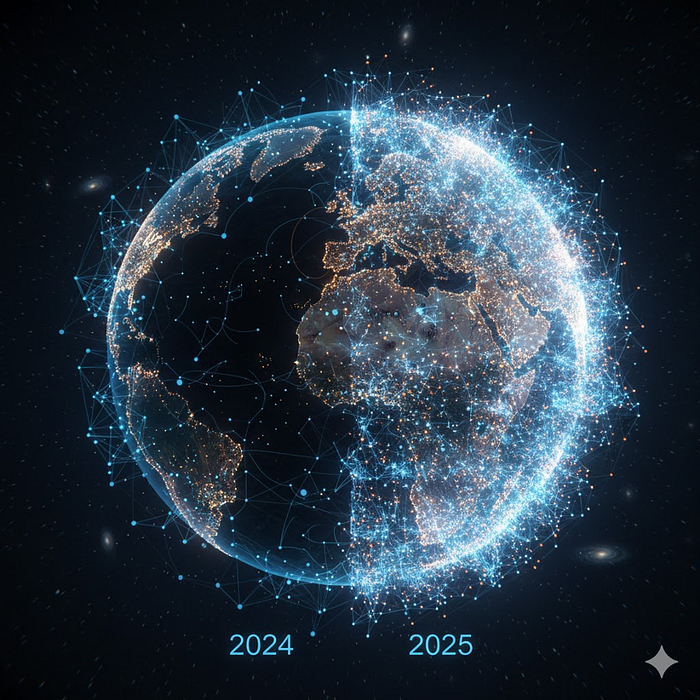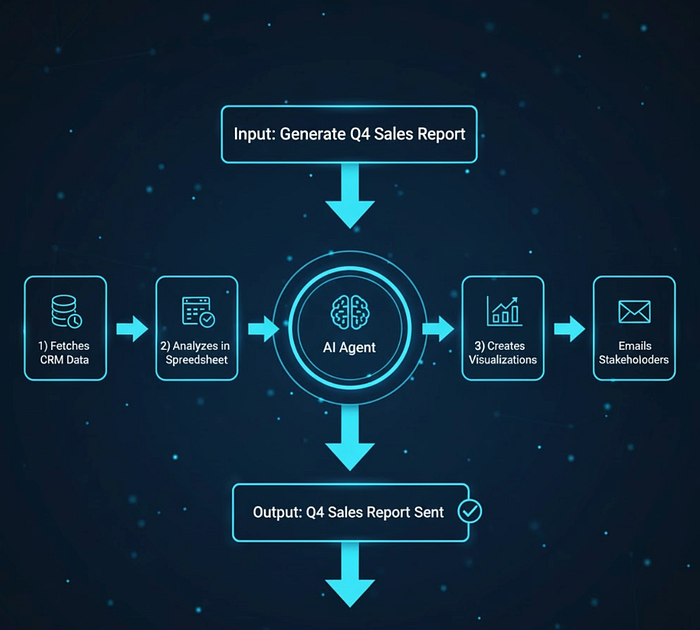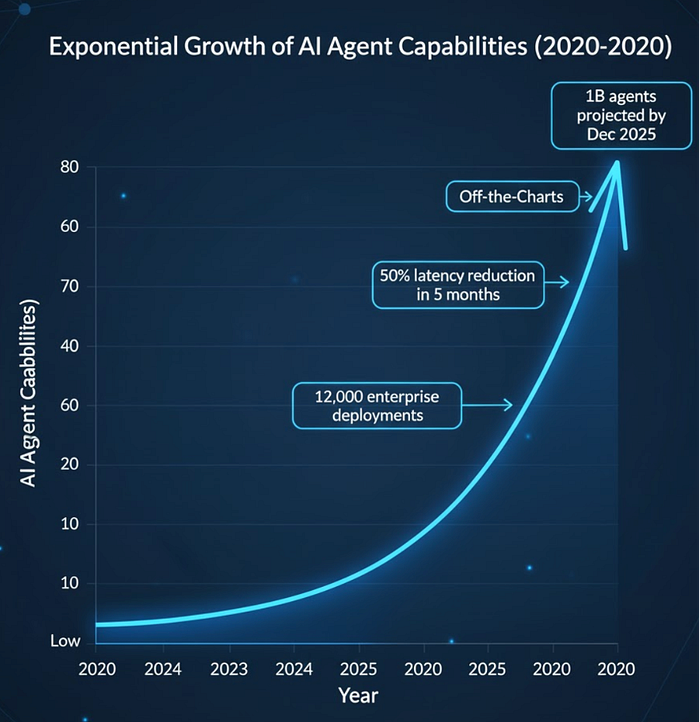Featured
We’re Not Ready for What AI Agents Are Actually Doing
I thought I understood where AI was headed. Then I saw what Klarna did with 700 employees’ worth of work.

Something happened in early 2024 that made me rethink everything I thought I knew about AI.
Klarna — the Swedish fintech company — deployed an AI assistant to handle customer service. Not assist with customer service. Actually handle it. Within the first month, this system was managing 2.3 million conversations. Doing the work of 700 full-time agents.
I read that headline and immediately thought: here we go again. Another company overhyping AI capabilities to pump their stock price. Another “revolutionary” chatbot that’ll fall apart the moment customers get frustrated.
Then I dug into the actual results.
Resolution times dropped from 11 minutes to under 2 minutes. Repeat inquiries fell by 25%. And here’s the part that made me stop scrolling — customer satisfaction scores stayed on par with human agents. Klarna projected this would drive $40 million in profit improvement for 2024.
That’s when something shifted in my brain. This wasn’t about better technology. This was about work fundamentally changing.

The Uncomfortable Truth I Keep Coming Back To
I’ve been in tech long enough to see hype cycles destroy promising ideas. Blockchain was going to revolutionize everything — now it’s mostly a punchline. The metaverse was the future — now it’s Facebook’s expensive mistake. NFTs were… well, we all know how that turned out.
So when people started talking about “AI agents” as the next big thing, I rolled my eyes. Another buzzword. Another way for consultants to charge companies millions for mediocre implementations.
But I can’t ignore what’s actually happening anymore.
Salesforce just rolled out Agentforce — their AI agent platform. Within months, they’re reporting results that sound like fantasy: Engine saw average case handle time drop by 15%. 1–800Accountant had 70% of administrative chat engagements autonomously resolved during their busiest tax weeks. Grupo Globo increased subscriber retention by 22%.
These aren’t small companies running experiments. These are established businesses with real customers and real stakes. And they’re not just testing AI agents — they’re betting their operations on them.
Salesforce announced they have 12,000 Agentforce customers. Their CEO, Marc Benioff, called this “the Third Wave of AI — advancing beyond copilots to a new era of highly accurate, low-hallucination intelligent agents that actively drive customer success.”
Here’s what gets me: their vision is to empower one billion agents by the end of 2025. One billion autonomous AI systems making decisions across thousands of companies.
That number haunts me. In a good way and a terrifying way.

What Makes This Different From Every Other AI Tool
I need to explain something that took me months to really understand: AI agents aren’t chatbots. They’re not even “smart assistants.”
When most people think about AI, they picture ChatGPT. You type a question, you get an answer. You ask it to write something, it writes it. You’re always in the driver’s seat, giving instructions, prompting for each step.
AI agents work completely differently.
They observe their environment, make decisions, and take actions autonomously. According to Salesforce’s own description, an agent can receive a high-level request and then plan to fetch data, analyze it in a spreadsheet, create a chart, and email a report — all in one go without reprompts.
Read that again. Without reprompts.
You’re not telling it how to do each step. You’re telling it what you need done, and it figures out the entire workflow itself. It decides what data to pull, how to analyze it, what format makes sense, who needs to see it.
That’s not a tool. That’s a colleague who works without sleeping, eating, or taking vacation.

The Moment I Realized This Was Real
I’m naturally skeptical. I question everything. I assume companies are exaggerating their results until proven otherwise.
But then I kept seeing the same pattern across different companies, different industries, different use cases.
Klarna’s AI assistant started strong — 2.3 million conversations in the first month. But here’s what made me really pay attention: by May 2025, they shifted strategy. They realized something important that pure efficiency metrics miss.
Trust and satisfaction aren’t purely transactional. They’re emotional. Sometimes customers need to talk to a human, not because the AI can’t solve their problem technically, but because they need someone to care about their problem.
So Klarna integrated human agents for complex issues while keeping AI for routine work. You know what happened? The system became more effective. AI now supports 800 full-time employees’ worth of work — more than when they went AI-only.
That’s the kind of evolution that tells me this isn’t hype. Companies are learning, adapting, finding what actually works. They’re not blindly throwing AI at everything — they’re figuring out where it genuinely adds value and where humans are still irreplaceable.
Why I’m Watching Salesforce So Closely
Salesforce matters because they’re not a scrappy startup making bold claims with no track record. They’re a $250+ billion company with 150,000+ customers who depend on their platform for mission-critical operations.
When they bet big on something, they’re risking relationships with enterprise customers who don’t tolerate failed experiments. They can’t afford to hype technology that doesn’t work.
And they’re going all-in on Agentforce.
The platform keeps evolving at a pace I’ve rarely seen in enterprise software. Agentforce 3, released in June 2025, features 50% lower latency since January 2025, support for web search as a data source, and a new Command Center for complete observability.
That last point is crucial. The Command Center lets you see exactly what your AI agents are doing — every action, every decision, every interaction. That’s not a feature you build for show. That’s what you build when your customers are actually deploying these systems at scale and need to trust them.
And the capabilities keep expanding. By mid-2025, Agentforce agents could take autonomous actions like creating or updating CRM records, generating new data entries like leads or cases, and making decisions that previously required human judgment.
The Part That Keeps Me Up at Night
Here’s what I can’t stop thinking about: we’re moving faster than we’re prepared for.
The global market for agentic AI is projected to explode from $7.28 billion in 2025 to over $41 billion by 2030. Some analysts predict that AI agents will manage 80% of digital workflows in customer service, IT, HR, and sales by 2030.
Five years. That’s how long we have before the majority of digital work in entire business functions is handled by autonomous AI.
I don’t think most companies — or most workers — have any idea how fast this is coming.
Look at what’s already happening. Companies implementing AI agents are reporting productivity increases of 7.8%, with 30% reductions in time spent on repetitive tasks. Some organizations claim up to 65% of certain internal tasks like IT support tickets or routine customer requests have been automated.
Those aren’t projections. That’s happening right now, in 2025.
And the technology is accelerating. Every few months, these systems get more capable, handle more complexity, require less supervision. The Agentforce 3 update brought 50% lower latency in just five months. That’s not incremental improvement. That’s exponential change.

What I’m Actually Worried About
I’m not worried that AI agents will replace all jobs. That’s the lazy take everyone jumps to, and it misses what’s actually happening.
I’m worried about the gap between what these systems can do and what we understand about how they work.
Klarna figured out that pure AI wasn’t enough — they needed humans in the loop for complex, emotional situations. But how many companies will learn that lesson the hard way? How many will deploy AI agents without understanding where they work brilliantly and where they fail dangerously?
I’m worried about the speed of adoption outpacing the speed of wisdom.
When Salesforce talks about empowering one billion agents by the end of 2025, I believe they can do it technically. But are we ready for one billion autonomous systems making decisions that affect real people’s lives, finances, healthcare, legal issues?
The technology is racing ahead. Our understanding of how to govern it, when to trust it, where to limit it — that’s moving much slower.
Why This Matters More Than You Think
I keep coming back to something Salesforce’s Marc Benioff said about this being the “Third Wave of AI.” Not better tools. Not smarter assistants. A fundamental shift in how work gets done.
The First Wave was AI that could recognize patterns — image recognition, speech-to-text, that kind of thing.
The Second Wave was generative AI — systems that could create content, write code, answer questions.
The Third Wave is agents that can observe, decide, and act autonomously. Systems that don’t just help you work — they do the work.
That’s not an incremental change. That’s a phase shift.
And it’s happening faster than any previous wave. ChatGPT took five days to reach one million users. These AI agents are being deployed by thousands of enterprise companies within months.
The adoption curve is vertical.
What I’m Watching For Next
I’m paying attention to three things that will tell me where this is really headed.
First: how companies handle failures. AI agents will make mistakes. They’ll misunderstand context, make wrong decisions, cause problems. The companies that figure out how to catch these failures early, learn from them, and build better guardrails — those are the ones that will succeed.
Second: where the limits actually are. Right now, everyone’s finding the easy wins — customer service, data entry, scheduling. But where do AI agents hit a wall? What tasks require human judgment in ways that can’t be automated? Finding those boundaries matters more than celebrating the successes.
Third: how workers adapt. This isn’t about job loss — it’s about job transformation. The most successful teams will be the ones who figure out how to work with AI agents, not compete against them or resist them. But that requires training, mindset shifts, and organizational changes that most companies haven’t even started planning for.
Why I’m Writing This
I’m not trying to hype AI agents. Honestly, I’m trying to do the opposite.
I’m trying to cut through the hype and look at what’s actually happening. Real companies with real customers are deploying autonomous AI at scale and seeing real results. That’s not speculation — that’s reality.
But I’m also trying to sound an alarm.
We’re moving into territory we’ve never been in before, and we’re moving fast. The technology is outpacing our ability to understand its implications, regulate its use, or prepare for its impacts.
Klarna’s experience taught us that pure efficiency isn’t enough — you need to understand when humans are still essential. Salesforce’s rapid evolution shows us how quickly these systems are improving. The market projections tell us this is about to explode across every industry.
The question isn’t whether AI agents are coming. They’re already here.
The question is: are we paying attention?
Because ready or not, the way we work is changing. And unlike previous technological shifts that took decades to unfold, this one is happening in years — maybe months.
I don’t know if that excites you or terrifies you. Honestly, it does both to me.
But I know this: ignoring it isn’t an option anymore.
References
1. Klarna AI Assistant Results (2024) — First month handling 2.3 million conversations, work equivalent of 700 FTE agents
2. Salesforce Agentforce Announcement (2024–2025) — 12,000 customers, vision for 1 billion agents by end of 2025
3. Industry Analysis — Global agentic AI market projected $7.28B (2025) to $41B (2030)
4. Salesforce Customer Case Studies — Engine (15% case handle time reduction), 1–800Accountant (70% autonomous resolution), Grupo Globo (22% retention increase)
5. Klarna Strategy Shift (May 2025) — Integration of human agents, AI supporting 800 FTE equivalent work
Listen To The Article

Black Friday 30%
Offer









